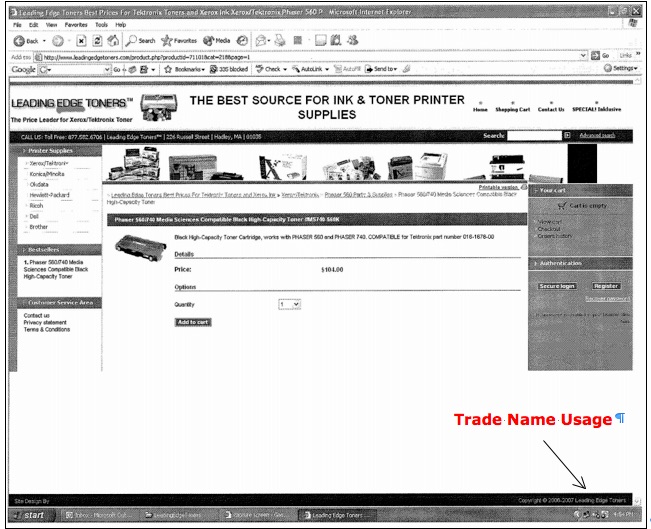Tips to Selecting Proper Trademark Classification in Trademark Application
Every trademark application filed with the United States Patent& Trademark Office (PTO) must identify the goods or services that are associated with the trademark. Failure to properly classify the goods or services in a trademark application may result in rejection of the trademark application. However, choosing the correct trademark classification is not as straight-forward as it might seem.
Correct Classification Is Essential To The Success of Your Trademark Application!
Every registered trademark must have a “specimen†showing use of the trademark in commerce for the specifically claimed goods or services. Goods or services are grouped by international trademark classification. There must be a clear association between use of mark on the submitted specimen and the classification of goods or services identified in the trademark application.
Applicants must pay a fee for each classification selected, therefore many applicants prefer to limit the number of classifications in a trademark application, often selecting only one classification. It is crucial that the selected classification(s) be correct, or the applicant will have to start over again, and pay a new fee.
Step 1: Goods Or Services?
The first step is determining if the mark is being used for goods or services.
The difference between goods and services may seem obvious, but there are pitfalls even at this basic level of classification. It may not be readily apparent in today’s internet-based marketplace if a mark is being used to identify the source of goods or services, as shown by the LEADING EDGE TONERS application. In this case, the applicant applied for a trademark for goods, including toner, toner cartridges, and ink. The applicant submitted the following specimen to support its use of the goods with the mark.

The PTO refused registration because the mark, as used in this specimen, was not directly associated with any goods at all. The PTO stated that the mark in this specimen is associated with services — not goods. The PTO explains:
“When a mark appears in the computer browser area as part of the URL, Internet address, or domain name of the website that houses the web page, consumers generally do not recognize this as trademark use. Instead, this use merely identifies the Internet location of the website where business is conducted and goods or services are offered. … “[A]pplicant’s use of the term LEADING EDGE TONERS as part of the internet address. . . identifies the website where applicant conducts its retail sales services. Obviously, a website can be used for multiple purposes and the simple fact that a term is used as part of the internet address does not mean that it is a trademark for the goods sold on the website.†TMEP 904.03(i)(B)(2).
Step 2: Software or Service? — An Important Distinction!
There are 11 trademark classification that are associated with services. Some of these service mark classifications seem to overlap, and may cause confusion in selecting the correct class, particularly for website and mobile app trademark applications.
Choosing Correct Classification — Class 35 and Class 42:
One important consideration is whether the applicant is directly providing services to others (Class 35-Advertising and Business), or whether the applicant is providing software for the services. (Class 42-Computer and Scientific).
When an applicant is providing non-software services the proper classification may be Class 35. However, if the applicant is providing computer software for the services, then the proper classification may be Class 42.
Example: Retirement Services — Classes 35 and 42
If an applicant is directly providing retirement services a proper description of the services in Class 35 could be: “financial consulting in the field of retirement planningâ€. However, if the applicant is providing computer software for “retirement services†then a proper description of services in Class 42 could be: “providing temporary use of non-downloadable software for retirement planning.â€
Questions About Correct Classification with Trademark Applications?
Please contact Adams Law Office for your trademark needs.

[…] this situation, Assembly Bill 64 was introduced. AB 64 would amend California law to create a new classification for cannabis goods or services. The proposed amendment creates a new section of the Business & […]